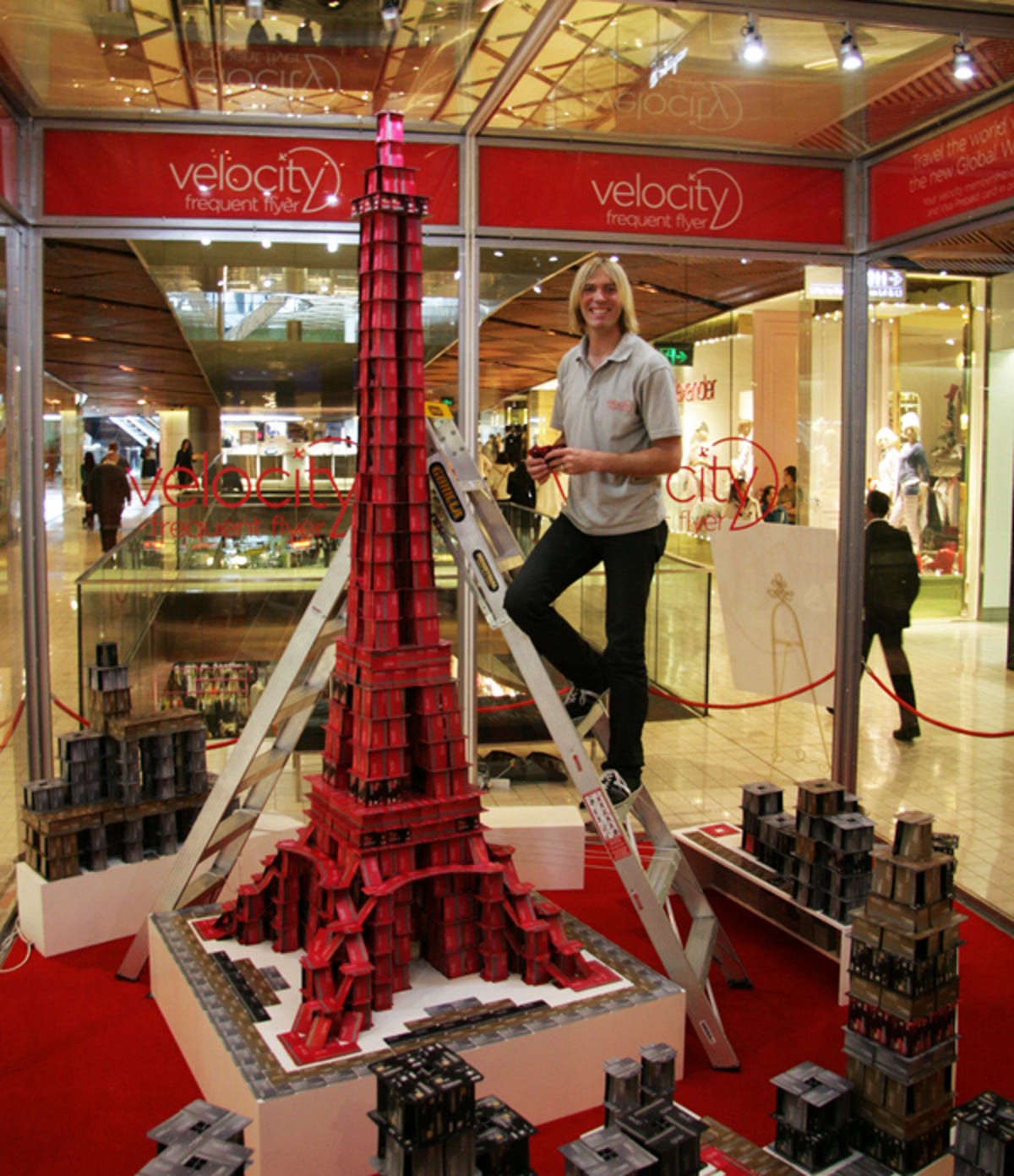Stacking the cards
Professional "cardstacker" Bryan Berg can build remarkable feats of engineering — all just using playing cards, with no glue, tape or even a tiny ball of Blu-Tack.

Professional "cardstacker" Bryan Berg can build remarkable feats of engineering — all just using playing cards, with no glue, tape or even a tiny ball of Blu-Tack.
As Bryan Berg tore a card, he said, "You can tell it's a real card because of the black layer." This was news to me, but apparently good-quality playing cards consist of three layers: the two printed layers on the outside, and a black layer sandwiched between them so that players can't see through to the other side. "It's called Vegas stock," Berg explained.
The 39-year-old has a good reason to know about cards. Since the age of eight, he's been learning how to use them to make structures, taking his first Guinness World Record at the age of 17 in 1992 for the tallest card structure ever built.
When I spoke to him, he was building a model of the Eiffel Tower as a promotion for Virgin Velocity Australia's new Global Wallet — according to a survey, the most desired place to visit. It's a complicated piece of work — it collapsed twice during construction — made of somewhere between 75,000 and 100,000 cards. But for all his architectural training, the process is mostly intuitive.
"I use Google SketchUp to design the concepts," he said. "Then I can send that to clients and if they want changes, I can just move things around in blocks." But the placement of the cards — the construction — all comes straight out of Berg's head — his cards, not dots on a screen, are his pixels. And after over 30 years, he has an instinct for what will work and what won't. "But I don't know until I actually start building."
Berg first started building card structures under the guidance of his grandfather, a retiree who would build card houses in his spare time. After winning his first Guinness World Record (he currently holds 12), he went on to study architecture at Iowa State University in 1997, serving on the design faculty for three years before obtaining a Master of Design Studies from the Harvard Graduate School of Design in 2004.
But it seems that playing cards were his destiny. "What I didn't know was, when you get a Guinness World Record, it's like telling people all around the world that there's this one crazy thing that you're really good at," he said. But despite the differences between building fragile structures out of pieces of cardboard and solid buildings of stone and steel, Berg believes that he has a dream job.
"Most architects get into the field because they love the creativity of design, they love building models," he said. "I get to do all that."
He builds inside a glass box, in order to protect his structure against both air movement and the curious poking from visitors to Westfield, Sydney. It's very still inside — and very stuffy. "What a lot of people don't realise is that humidity can be as bad as wind," he said. Too much moisture in the air, and the cards start to sag; too little, and the dry air sucks the minuscule amounts of moisture from the fibres of the cards, causing them to curl.
It led Berg to the one piece of technology that he has in his arsenal: a handheld humidity meter. "About 50 to 60 per cent is the sweet spot," he said.
And then, after gruelling hours — about 120 of them — he gets the ultimate satisfaction: knocking it all down. "I think that's almost my favourite part, not just for knocking them down, but for what I learn about their structural weaknesses." He described taking a leaf-blower to a structure. "When you're building it, you feel you have to be so careful, but then all these cards start flying away and it's still standing and still standing and you realise you didn't have to worry so much."
Each structure, each card, each destruction, teaches him more about what he can do — it never gets boring, because all the time, Berg discovers a new way of stacking the cards. "This one and the Beijing Olympic Village were probably the most technically difficult I've ever done," he said. "What I am doing today would have been impossible 10 years ago."

